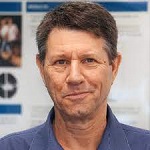The Choroid as an Optical Biomarker for Eye Growth
Hosted By: Clinical Vision Sciences Technical Group
21 February 2023 19:00 - 20:00
Eastern Time (US & Canada) (UTC -05:00)The incidence of myopia is increasing globally, particularly in many developed countries in south-east Asia. Projections of myopia progression suggest that rates of high myopia (>6 D) will become a significant public health issue, as the risk of myopic macular degeneration, retinal detachment and other eye conditions exponentially increase with the level of myopia.
A range of treatment interventions are being used to attempt to slow the progression of myopia, including atropine, orthokeratology, soft multifocal contact lenses, multifocal spectacles, light of different wavelengths and increased outdoor light exposure. The thickness of the choroid has proven to be a reliable short-term biomarker for stimuli that promote or inhibit longer term eye growth. First observed in chicks, the choroid thins in response to hyperopic retinal defocus and thickens when exposed to positive defocus. Similar responses are seen in humans, within minutes of exposure.
In this webinar hosted by the Clinical Vision Sciences Technical Group, Prof. Michael Collins from Queensland University of Technology will discuss a range of studies that have examined the response of the choroid to myopiagenic stimuli and myopia treatments.
Subject Matter Level: Intermediate - Assumes basic knowledge of the topic
What You Will Learn:
• Myopia and treatments
• Choroid as an optical biomarker
• Progress in the last 10 years
Who Should Attend:
• Graduate Students
• Clinicians
• Researchers
About the Presenter: Michael Collins from Queensland University of Technology
 Michael Collins is a Professor in the School of Optometry and Vision Science at the Queensland University of Technology. Collins established the Contact Lens and Visual Optics laboratory in 1990, and the lab comprises a multi-disciplinary group of researchers and Ph.D. students. His research interests have broadly encompassed refractive error development, the visual optics of the eye, contact lenses, biomechanics, and imaging of the eye. He has over 200 peer-reviewed research papers, over 20 patents, and more than 100 conference presentations.
Michael Collins is a Professor in the School of Optometry and Vision Science at the Queensland University of Technology. Collins established the Contact Lens and Visual Optics laboratory in 1990, and the lab comprises a multi-disciplinary group of researchers and Ph.D. students. His research interests have broadly encompassed refractive error development, the visual optics of the eye, contact lenses, biomechanics, and imaging of the eye. He has over 200 peer-reviewed research papers, over 20 patents, and more than 100 conference presentations.
